Medicinal and Master Plants
Inventory of our most powerful plant medicines. Used for healing physical and spiritual ailments, energizing the body and mind, and gaining wisdom from master plants.
Inventory of our most powerful plant medicines. Used for healing physical and spiritual ailments, energizing the body and mind, and gaining wisdom from master plants.
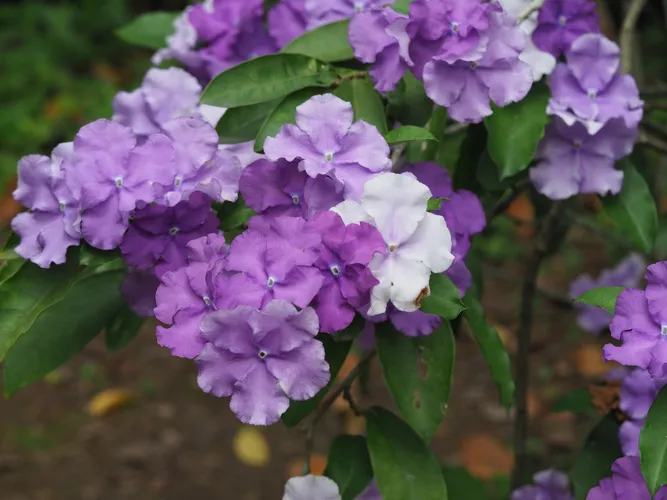
Chiric Sanango (Brunfelsia grandiflora) is one of the most respected and used Master Plants in traditional Amazonian medicine, particularly in the region of Peru.
Rheumatism and Arthritis: It is well-known for its use against rheumatism and joint stiffness.
Fever and Flu: It is employed to treat colds, flus, and fevers.
Others: Its use against leishmaniasis is also mentioned, as is its use as an additive in Ayahuasca potions to psychically strengthen the person who takes them.
As a Master Plant, it is believed to possess a spirit or energy that can transmit knowledge, teachings, and deep healing, especially through the practice of the Amazonian Dieta (a specific shamanic diet/retreat). Effects are attributed to it that go beyond the physical, focusing on emotional and spiritual healing:
Strength and Confidence: It is known for increasing self-confidence and decisiveness. It is considered the plant of boldness and helps one take a stance in life.
Emotional Balance: It helps to eliminate fears, both physical and affective coldness, and to restore masculine-feminine balance.
Openness and Connection: It facilitates coming out of introspection/self-absorption and promotes openness to connect with others and with one's own destiny. It is also said to help people love and connect with others, as well as with themselves.
Flexibility: It provides flexibility on all levels (physical, mental, and emotional).
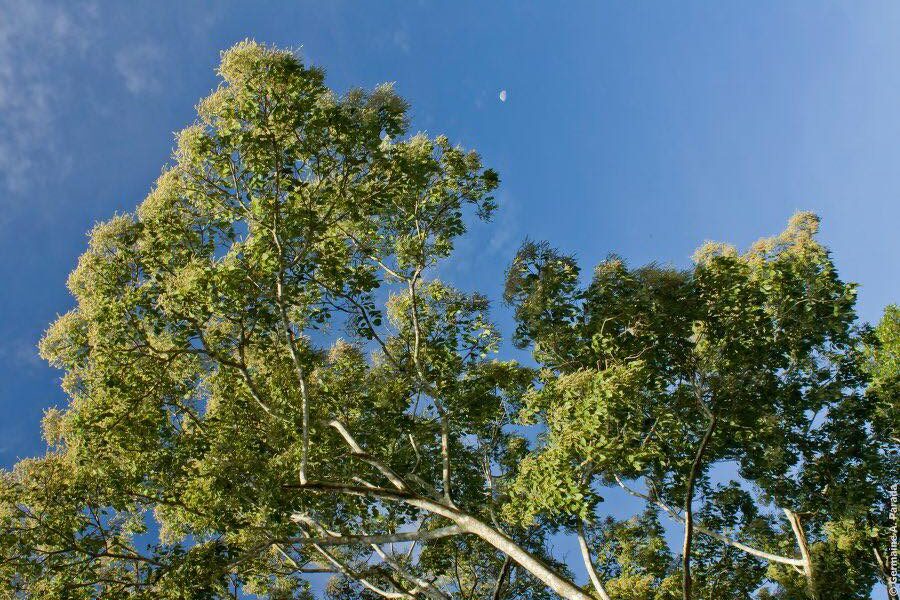
Ajosquiro (Gallesia integrifolia), also known as Palo d'Alho (Garlic Stick), is an Amazonian tree easily identifiable by the intense garlic odor that emanates from all its parts, thanks to its potent sulfur compounds.
On a medicinal level, it is recognized for its strong antimicrobial and antibacterial properties. It is traditionally used to treat various internal and external infections, help reduce fever, and alleviate diarrhea.
In its biocidal role, Ajosquiro has proven to be a powerful natural insecticide. Extracts from its leaves and flowers are highly effective for controlling pests and disease vectors, such as the larvae of the Aedes aegypti mosquito (a dengue transmitter). This characteristic makes it a valuable resource for protecting and purifying the environment in Amazonian communities.
Within the context of Amazonian spiritual practices, Ajosquiro is primarily used as a cleansing and protective plant. It is not typically a "Master Plant" for deep introspection (like other diet masters), but rather a plant for energetic purification. The bark is frequently used in ritual baths to cleanse the body of negative energies and bad influences, and to strengthen the individual's spiritual protection.
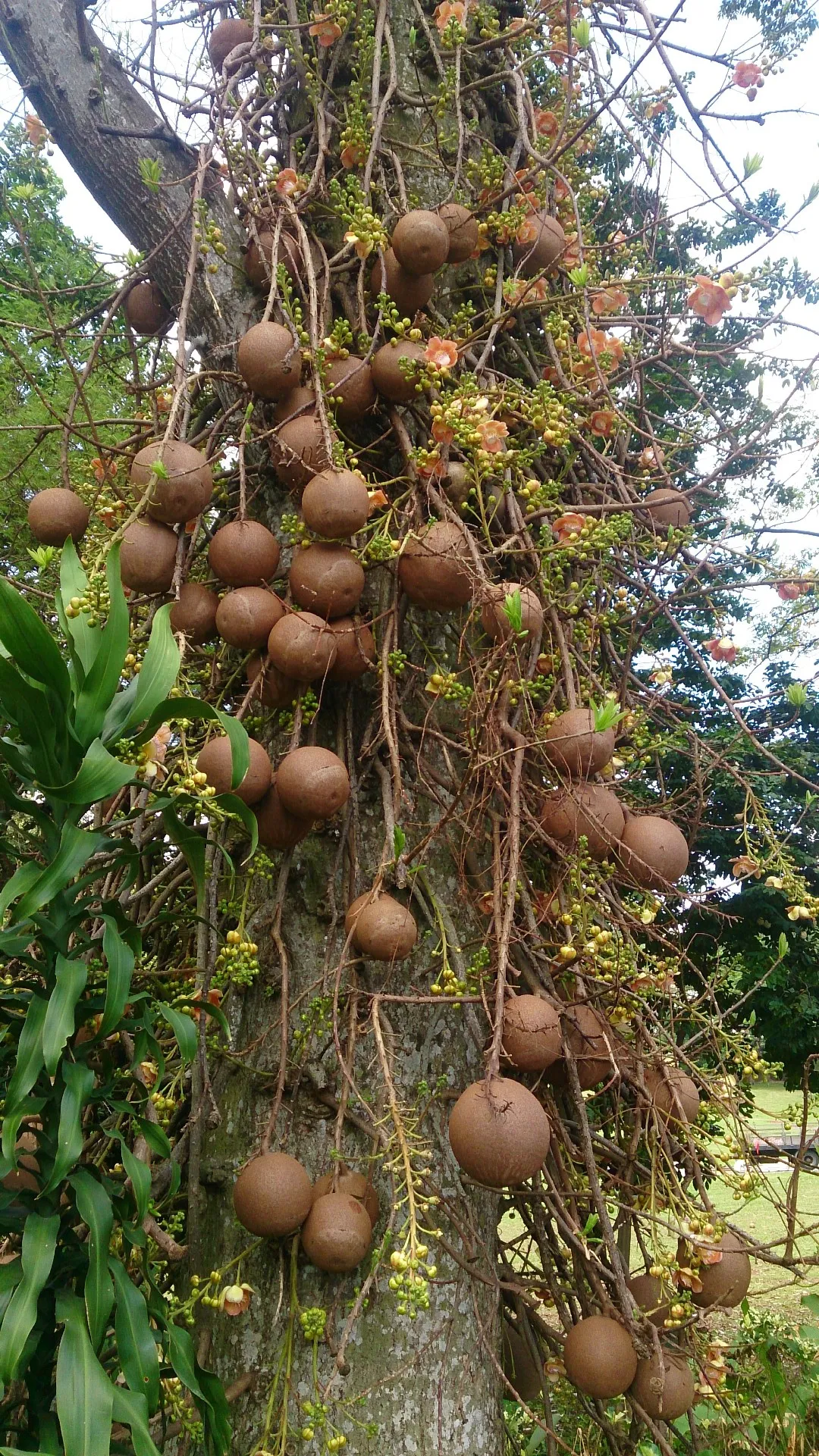
The Ayahuma, also called the "Cannonball Tree," is an imposing Amazonian tree valued for its medicinal properties. Its flowers, bark, and the pulp of its large fruits are used in traditional medicine to treat a variety of ailments. Its active components give it antimicrobial, antifungal, and analgesic properties, making it frequently used to fight infections and relieve pain.
On a spiritual level, Ayahuma is considered a Master Plant of great power in Amazonian shamanism. It is included in the "diets" of apprentices and healers to gain strength, guidance, and protection. The spirit of the tree is believed to help shield the energetic body, protecting the individual from negative influences and connecting them with the wisdom of the ancestors.
The tree is also notable for its great cultural symbolism. Its trunk produces large, fragrant flowers (which hang in clusters) and spherical, woody fruits. Outside of the Americas, the Ayahuma is considered a sacred tree and is planted in Buddhist and Hindu temples in Asia. Overall, it is a species that connects the physical world (through healing) with the spiritual world (through protection).
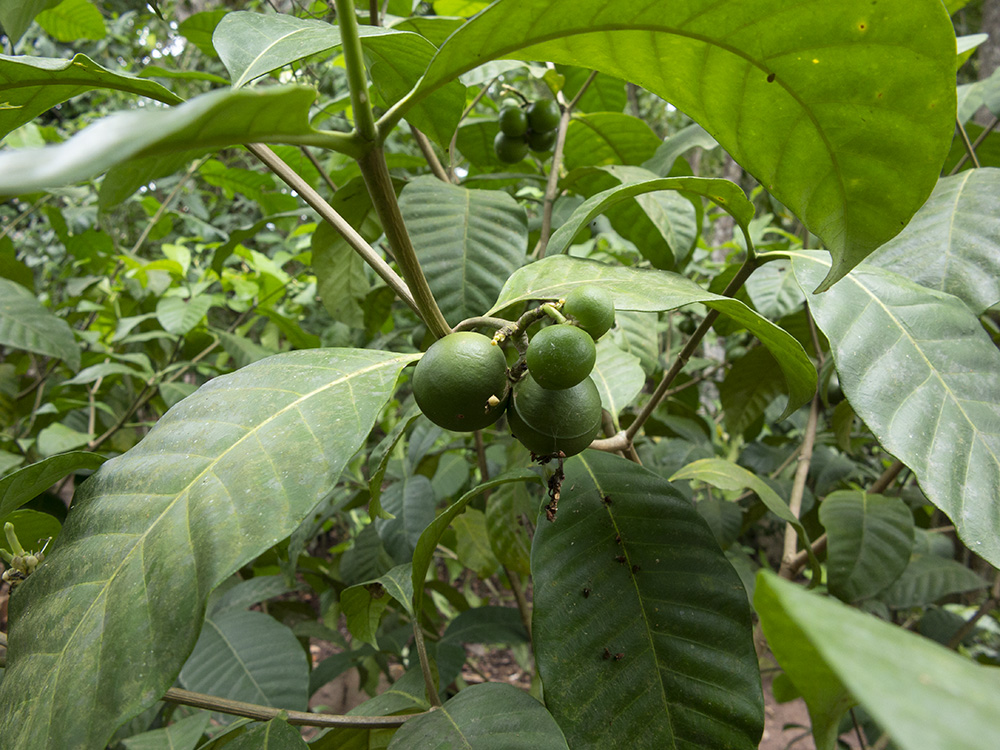
Uchu Sanango is a highly respected Master Plant in traditional Amazonian medicine, recognized as one of the fundamental "diet" plants.
Its medicinal use focuses on physical ailments such as colds/flu, throat and tonsil infections, and it is traditionally used to relieve rheumatism and edema (swelling of the legs). It is often prepared by macerating or boiling pieces of the root or bark.
As a Master Plant, Uchu Sanango has a function of fire and purification. It is known for toning and strengthening the spirit and will. It is credited with the ability to teach righteousness, help correct errors, and affirm the discipline and determination needed to make concrete plans for the future. Unlike Chiric Sanango (another plant in the same group) which brings a cooling sensation, Uchu Sanango produces an intense feeling of heat, which, in the shamanic worldview, is responsible for "burning" or eliminating dark energies.
Its most important role in the energetic realm is protection and deep cleansing. It is used to purify the body of "virotes" (spiritual darts), witchcraft, the evil eye, and any type of negative energy or thought that may be causing illness or discomfort. By being "dieted" under strict restrictions, Uchu Sanango acts by eliminating these spiritual and emotional impurities, helping the person establish a solid center or axis in their life and eliminate negative thoughts.
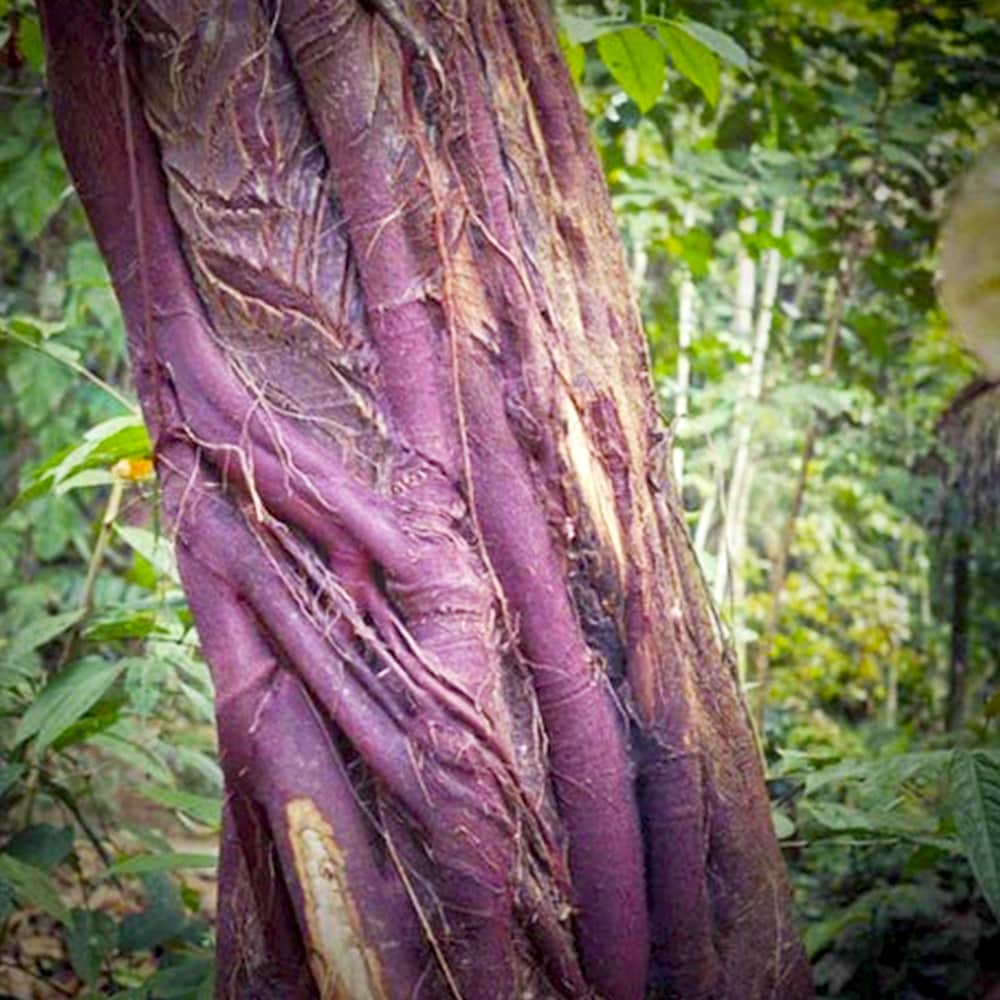
Renaquilla is a tropical tree valued in traditional medicine for its healing properties, though its use requires caution. In folk practice, various parts of the plant have historically been used to treat certain ailments. Studies on closely related Clusia species have suggested a possible hypotensive effect (for lowering blood pressure), indicating potential for cardiovascular system research.
However, the use of Renaquilla carries a risk of toxicity. The plant, especially its fruits and sap, can be harmful if ingested, and its latex is known to cause skin irritation. For this reason, the tree is more famous outside of traditional medicine for its durable wood and for a practical use: the thick sap from its fruit has been utilized as a natural glue for sealing boats.
In the Amazonian context of Master Plants, Renaquilla is classified as a Healing or Protective Tree. Although its role in shamanic "diets" is not as prominent as other trees, it is credited with qualities of cleansing and energetic strengthening. It is respected for its protective spirit, which helps to reinforce the body and aura of the people who work with it.
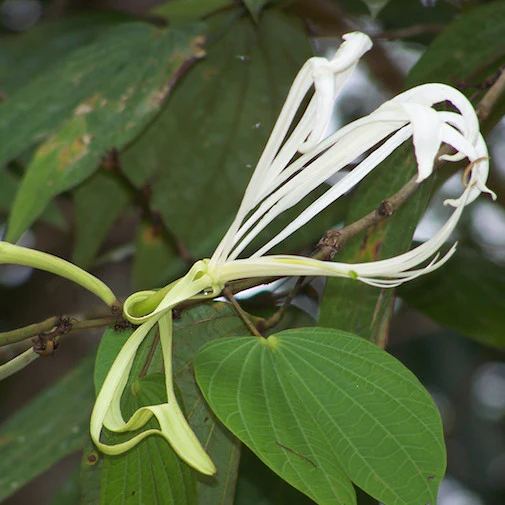
Bellaco Caspi is a fundamental tree in the traditional Amazonian pharmacopeia, valued primarily for the white latex that flows from its bark. This latex is a potent natural remedy, traditionally used by communities to promote the healing of wounds and ulcers, reduce inflammation, and as an antiseptic against various infections. Recent studies have validated this wisdom, confirming its strong anti-inflammatory and wound-healing activity.
In traditional medicine, Bellaco Caspi is not limited to its latex. Different parts of the tree (bark, leaves, and root) are prepared as decoctions to treat a wide variety of internal ailments, such as hepatitis, rheumatism, urinary infections, and gynecological issues. It is considered a natural restorative and energizer, essential for recovering vitality and general health.
As a Master Plant or "Palo Curandero" (Healing Tree), Bellaco Caspi holds a place of respect in Amazonian shamanism. Healers use it in "diet" rituals to invoke its spirit, with the goal of gaining strength, knowledge, and guidance. It is believed that the plant helps reveal the origin of illnesses, even those of a spiritual or energetic root, and that it bestows its healing power upon the one who consumes it.
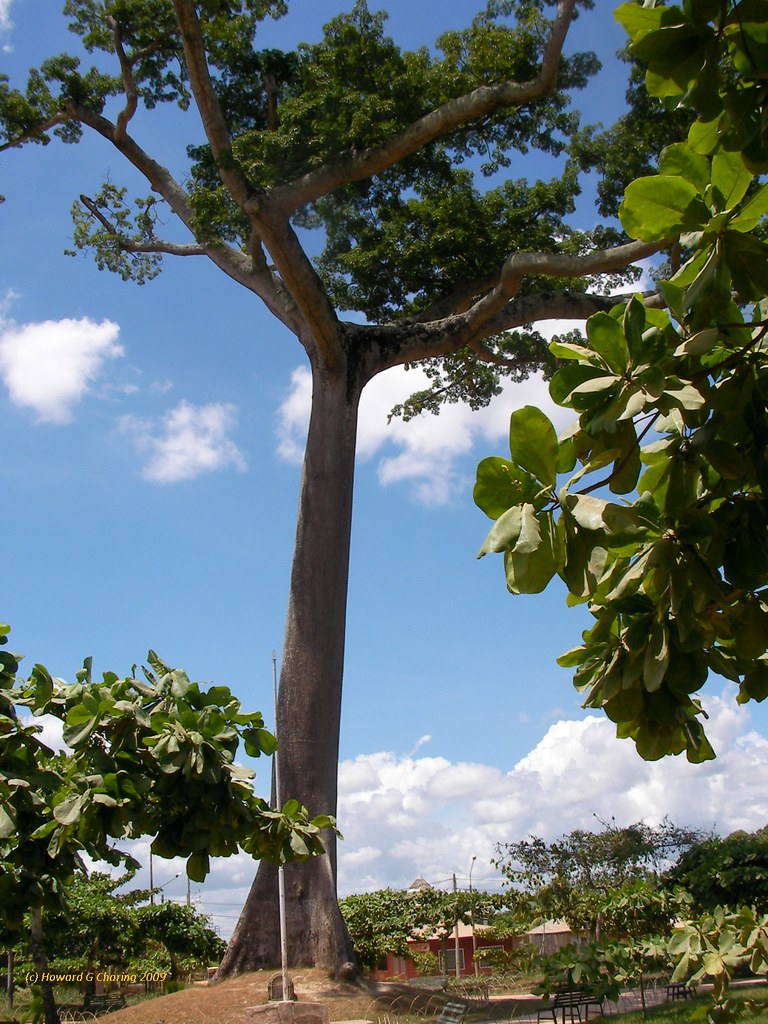
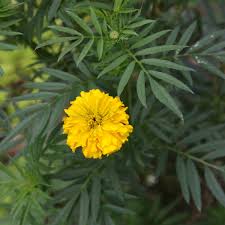
Rosa Sisa (or Cempasúchil / Marigold) is a medicinal plant widely used for its antibiotic and anti-inflammatory properties. Traditional medicine uses the infusion of its flowers and leaves to effectively treat digestive problems such as dysentery, diarrhea, and indigestion (empacho). Furthermore, it is a popular remedy to alleviate eye conditions and is consumed as a tea to reduce fever and expel intestinal parasites, thanks to its active compounds like lutein.
On a spiritual and ceremonial level, the Rosa Sisa is considered a powerful Master Plant of Cleansing and Light. Due to its bright color and intense aroma, it is associated with the Sun and vitality. In shamanic traditions, it is used in purification baths and rituals to harmonize the mind, reduce anxiety, and achieve a deep connection between the body and spirit.
Finally, this flower plays a crucial symbolic role as a spiritual guide. In Mexico, it is the icon of the Day of the Dead (Día de Muertos), where its petals are scattered to create a sacred path that illuminates the way for the ancestors. This ritual use underscores its status as a plant that not only heals the physical body but also protects the spirit and facilitates the transition between worlds.
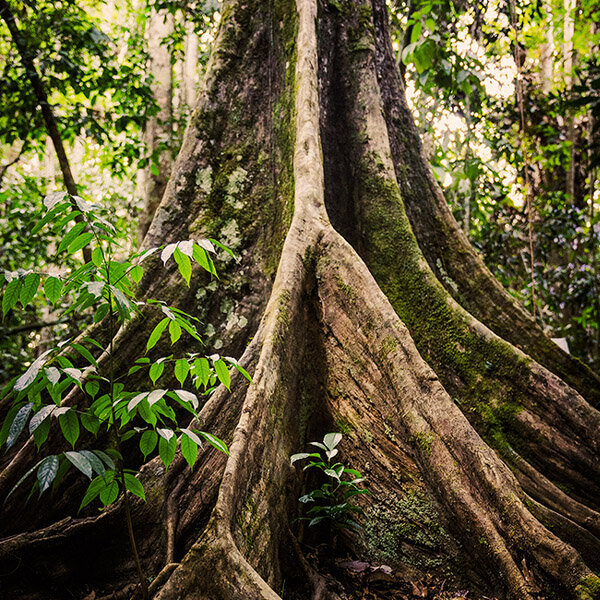
The Noya Rao, known in the Peruvian Amazon as the "Tree of Light" or "Flying Tree", is one of the most respected and rare Master Plants in the Shipibo tradition. It is not just a botanical species but a spiritual entity of the highest rank. Shipibo mythology holds that it is the personification of an enlightened being whose energy manifests through its leaves, which, according to legends, glow in the dark.
The main use of Noya Rao is through the strict ritual practice of the Diet, a necessary process for training healers. The essence of the tree acts directly upon the spirit, providing mental clarity, inner peace, and a profound sense of life purpose. It is considered a medicine for the soul, capable of healing emotional disorders and spiritual decay, rather than a specific physical ailment.
In essence, Noya Rao is the spiritual guide par excellence. Its power is sought to obtain ancestral wisdom and profound personal transformation, acting as a lighthouse that illuminates the path of consciousness. To work with Noya Rao means to receive the knowledge of the jungle and the necessary strength to help others.
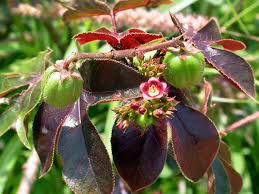
Piñón Colorado (or Red Physic Nut) is a toxic shrub highly valued in traditional Amazonian medicine, where it is sometimes known as "Curatodo" (Cure-all) or Túa-Túa. Its leaves, roots, and latex are used for their strong anti-inflammatory, antimicrobial, and wound-healing properties. It is prepared as a decoction to purify the blood and treat digestive problems. Additionally, the latex is applied externally to heal burns and wounds, though its seeds must be handled with caution due to their toxicity.
In the spiritual realm, Piñón Colorado is a Master Plant of protection and cleansing. Healers use it in ritual flowering baths and diets to shield the person from external negative energies, such as witchcraft. It is considered a medicine that acts on a subconscious level, helping the person to release harmful thought patterns and strengthen their spirit.
In summary, the Piñón Colorado is essentially a protective shield that integrates physical and spiritual healing. It offers potent remedies for the skin and infections, while also working to harmonize the spirit and provide deep energetic cleansing. Its power lies in its ability to heal and defend the person from all harmful influences.
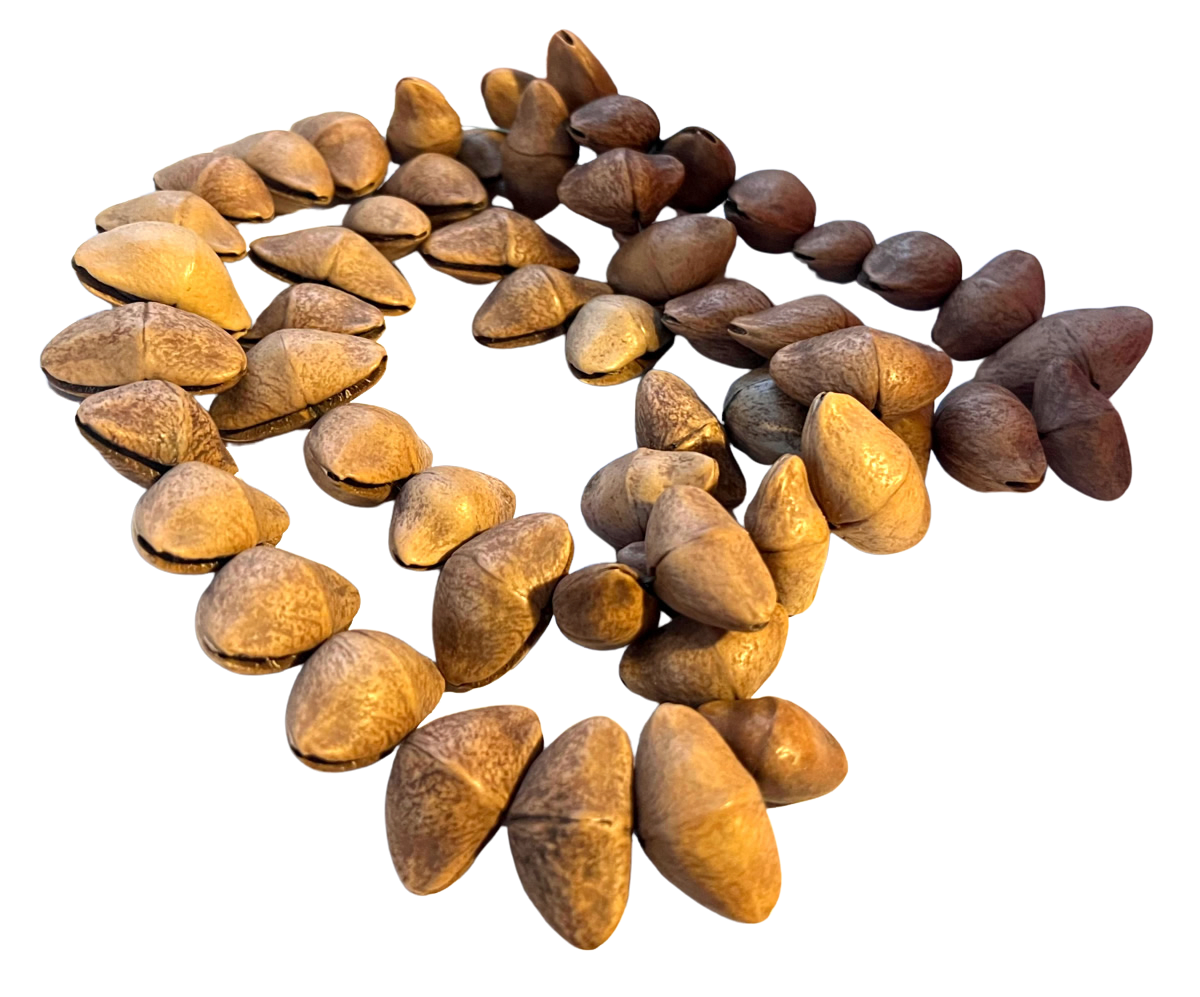
Camalonga is an Amazonian shrub valued in traditional medicine, despite belonging to a genus that includes species with high levels of toxicity (such as strychnine). On a physical level, it is used in infusions to combat rheumatism and arthritis, as well as to purify the blood and accelerate the healing of wounds. However, its medicinal use requires the utmost care and expert knowledge, as an incorrect dose can cause intoxication and severe side effects.
As a Master Plant, Camalonga focuses on the cleansing and energetic harmonization of the subtle body. It is well-known for its ability to balance the nervous system and calm anxiety, providing a deep feeling of peace and tranquility. It is used in purification rituals to clear the effects of unhealthy relationships and restore a person's vital energy.
Finally, Camalonga is considered a potent activator of oneiric activity (dreams). Consuming it, within the context of a shamanic diet, helps the person to reconcile with repressed emotions and memories, facilitating psychological integration and self-knowledge. In essence, it acts as a silent pacifier and revealer that guides the spirit toward balance.
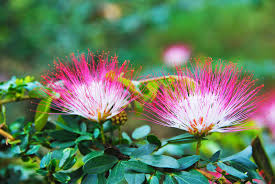
Bobinzana is an Amazonian shrub known for its striking pink flowers and its broad medicinal properties. The bark and roots of this plant, which grows along riverbanks, are used to treat rheumatism and arthritis. It is also credited with benefits as a stimulant and body invigorator, helping to combat fatigue and acting as a blood purifier.
As a Master Plant, Bobinzana is famous for being a "heart opener" or the "heart medicine." Its subtle energy promotes inner peace, compassion, and facilitates the healing of emotional trauma. It is used in ritual diets to deepen spiritual connection and help the individual see and accept the parts of themselves that need healing.
Finally, Bobinzana notably influences the inner world, being a powerful inducer of lucid and vivid dreams. This oneiric effect supports self-knowledge and self-reflection by blurring the barriers between dream and reality. Consuming it helps one gain mental clarity and a sharper focus for daily life.
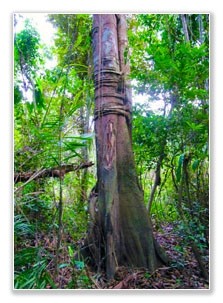
The Huayracaspi is a large Amazonian tree, with its bark being the primary part used in traditional medicine. Its properties are mainly anti-inflammatory and antimicrobial. Because of this, it is used externally for treating wounds and skin infections, with baths or decoctions prepared to act as potent wound healers. In internal doses, it is also used as a strong emetic (vomit-inducing) and purgative to cleanse the system.
At the Master Plant and cultural level, Huayracaspi is valued for its power of integral cleansing. Indigenous peoples use its bark to obtain a natural foam that serves as a soap. This use is not just for basic hygiene; it has a ritual sense of purification, both for cleaning dirt from the body and for removing bad energies or dandruff from the hair, acting as a powerful clearing agent.
In summary, Huayracaspi is considered a "Palo Curandero" (Healing Tree) whose spirit brings strength and purification. It is a medicine that works directly to heal and disinfect physical skin problems, while its ritual use helps to cleanse and protect the energetic body from any harmful influence. It is a symbol of hygiene and deep healing.
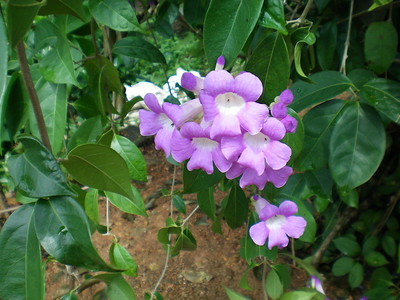
Ajo Sacha (Mansoa alliacea), an Amazonian climbing plant, is highly valued for its potent medicinal properties, many of which are attributed to compounds like allicin (similar to that in common garlic), polyphenols, and flavonoids. In traditional medicine, it is primarily used as a natural analgesic and anti-inflammatory to treat headaches, rheumatism, arthritis, and muscle aches. Additionally, it is recognized for its ability to improve blood circulation, act as an antioxidant, and possess antibacterial, antiviral, and antifungal effects, making it a tonic that reinforces overall body immunity.
Beyond its physical effects, Ajo Sacha is considered an essential Master Plant in Amazonian shamanism. It is known as the plant that "opens" and prepares a person for deeper spiritual work. Its ritual uses focus on energetic cleansing, helping to expel negative influences from the body and the environment. For this reason, it is called the "plant of discernment" or "of vocation," as it assists people in finding mental clarity, separating external influences from their true essence, and discovering their purpose or vocation in life.
In summary, Ajo Sacha is an integral jungle plant that offers benefits on both a physical and spiritual level. Its traditional medicinal use is broad, covering everything from relieving pain and inflammation to strengthening the immune system. On a ceremonial level, it is a key tool for emotional healing and energetic purification, guiding one toward clarity and self-knowledge.
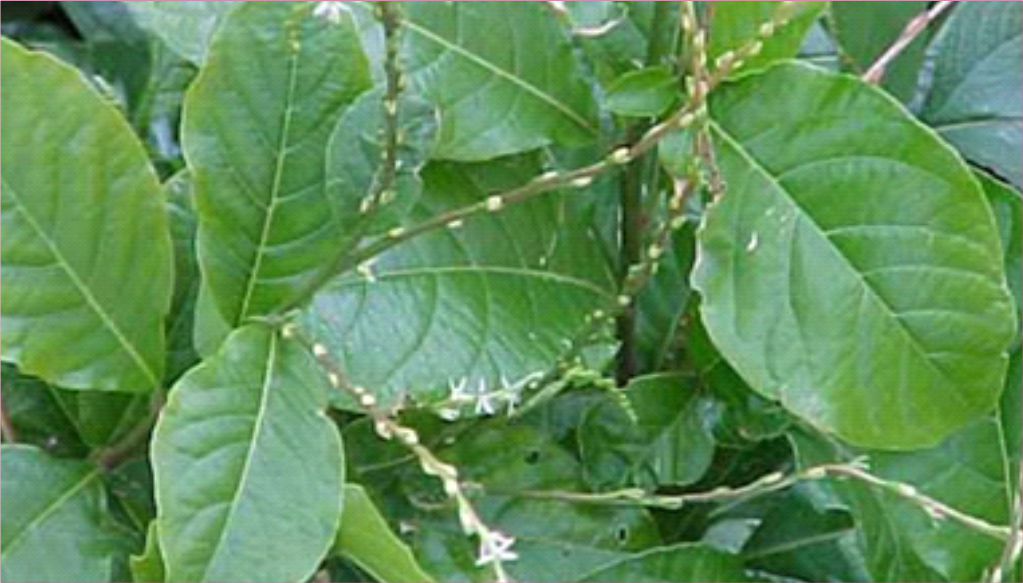
Mucura (Petiveria alliacea), also known as Anamú, is an Amazonian medicinal plant recognized for its potent aroma. On a physical level, it is highly valued for its analgesic and anti-inflammatory properties, making it a traditional remedy for headaches, toothaches, and especially for treating the symptoms of rheumatism and arthritis. Its sulfur compounds and flavonoids also give it great antioxidant power and make it useful as a diuretic and sudorific (sweat inducer).
A crucial benefit of Mucura is its capability as an immunostimulant. Traditional medicine uses it to strengthen the body's defense system and combat a wide range of respiratory (colds, flu) and microbial infections, thanks to its antibacterial, antiviral, and antifungal actions. Scientific studies support this use, highlighting that the plant can activate the immune response, making it an important support in cases of weakness or illness.
In the spiritual and shamanic realm, Mucura is a Master Plant of great importance, focused on protection and mental clarity. It is used for energetic cleansing and to shield the person against witchcraft, envy, or bad energies. Known for aiding willpower and discernment, it is prescribed to those who need to overcome melancholy, find direction in life, or make important decisions, by activating the initiative needed to bring about positive change.
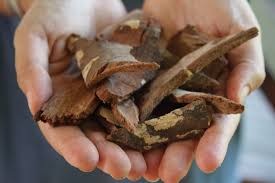
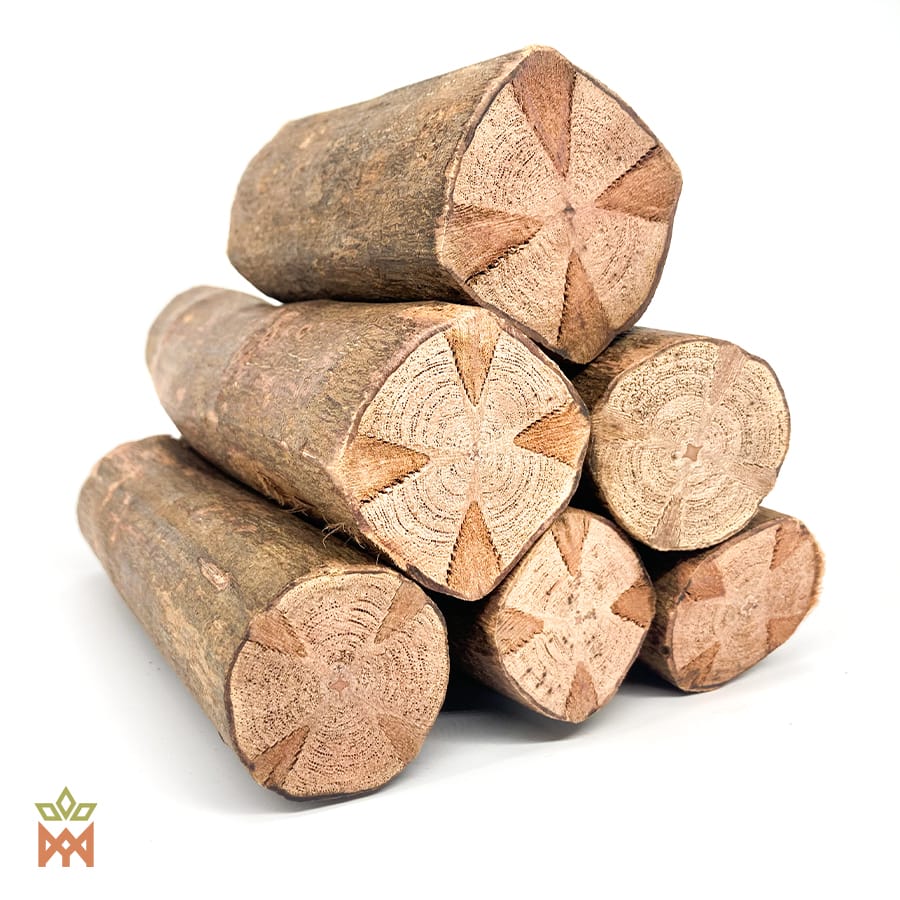
Clavohuasca (Tynanthus panurensis) is an Amazonian vine with a distinctive clove scent, highly popular for its use as a natural aphrodisiac. Its bark and root, consumed mainly in alcoholic macerations (such as in the famous "Siete Raíces" or Seven Roots blend), are used to increase libido and sexual potency, treating issues like frigidity and erectile dysfunction. It is a known tonic for restoring and energizing the body, fighting general fatigue.
On a medicinal level, Clavohuasca is also an effective remedy against pain and inflammation. Its analgesic and anti-inflammatory properties make it a traditional treatment for alleviating the symptoms of rheumatism, arthritis, and muscle aches. Furthermore, it aids digestive health, being used to reduce flatulence and gas, and its bioactive compounds give it a good antioxidant effect.
As a Master Plant in the shamanic tradition, Clavohuasca fulfills the function of strengthening the spirit and the energetic body. It is consumed in plant diets to awaken vitality and vigor. It is associated with the toning of the self, preparing and purifying the person to access deeper states of consciousness and achieving a better balance between physical and spiritual energy.
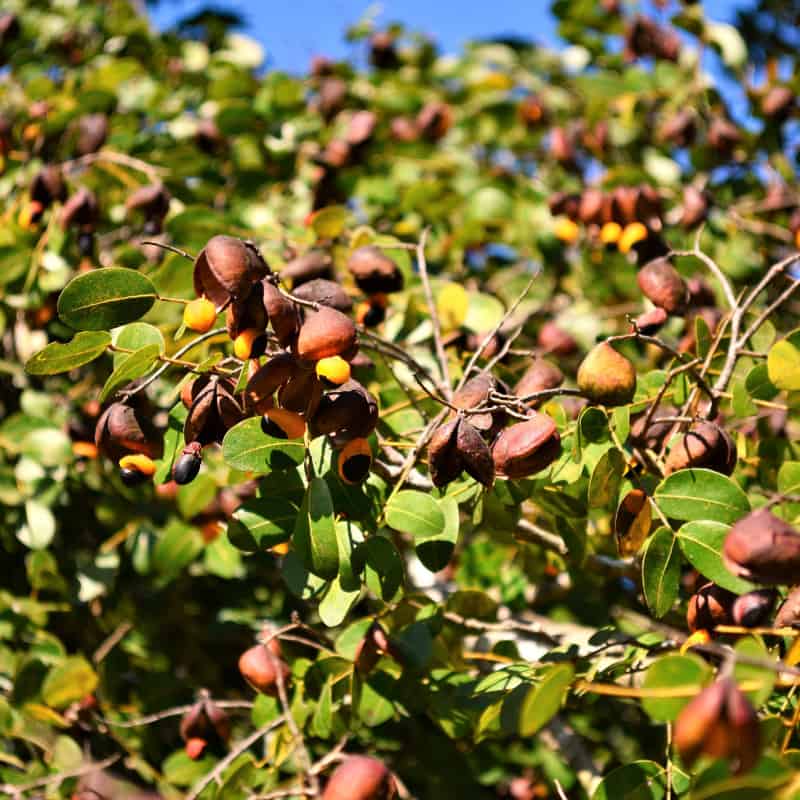
Copaiba Oil (the oleoresin from the Copaifera tree) is a highly valuable Amazonian resource, standing out as a potent natural anti-inflammatory and analgesic. Its main component, beta-caryophyllene, allows it to alleviate chronic pain such as rheumatism, arthritis, and muscle discomfort. Consumed internally, it supports the health of multiple systems, being useful as an expectorant for respiratory problems and as an anti-infectious tonic for the urinary and digestive tracts.
Topically, Copaiba is an excellent antiseptic and wound healer for the skin. It is widely used to cure and disinfect wounds, cuts, ulcers, and burns, in addition to being effective against various skin conditions like acne, psoriasis, and mycosis (fungal infections). Its regenerative properties promote tissue healing, both internal and external, and help maintain clear, healthy skin.
As a Master Plant, Copaiba symbolizes purification and calmness. Indigenous peoples use it in rituals to cleanse negative energies and restore the spiritual and emotional balance of the body. Inhaling its aroma provides a deep sense of relaxation, helping to reduce stress and anxiety. Its spiritual use focuses on restoring harmony, strength, and protection to the self.
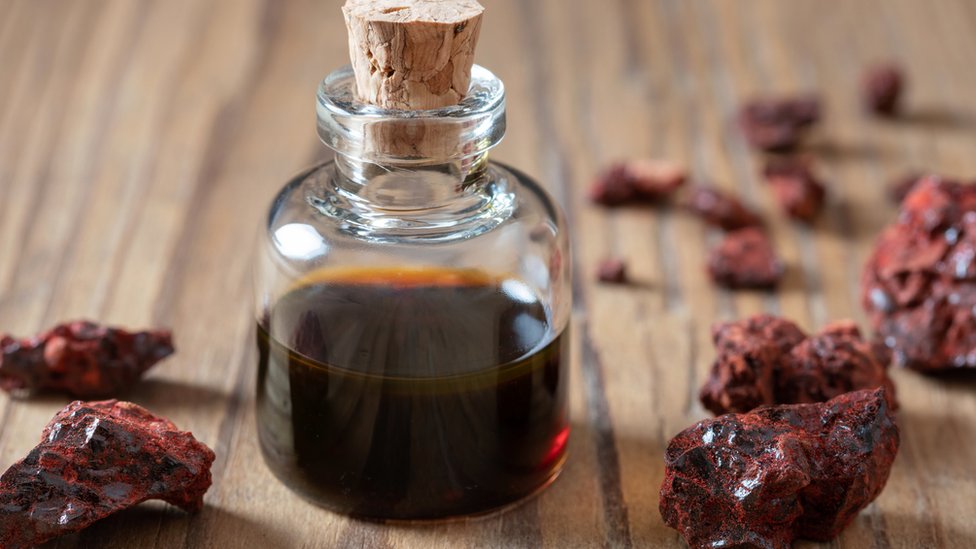
Sangre de Grado (Dragon's Blood) is the intense red latex that exudes from the Croton lechleri tree, known as the most powerful wound healer in the Amazon. When applied, this liquid balm forms a "second skin" that stops bleeding (hemostatic) and accelerates the healing of wounds, cuts, burns, and bites. It is highly valued for its content of taspine and other compounds that promote collagen formation and are simultaneously antiseptic, analgesic, and anti-inflammatory.
In addition to its external uses, Sangre de Grado is an excellent protector of the digestive system. It is taken orally to heal and alleviate gastritis and stomach ulcers, as it forms a protective layer over the gastric mucosa. It is also very effective against the Helicobacter pylori bacteria and various pathogens. Its antimicrobial properties make it a traditional remedy for combating chronic diarrhea and intestinal and fungal infections.
As a Master Plant, Sangre de Grado is viewed by indigenous peoples as the manifestation of vital force and regeneration. It is used in shamanism as both a physical and energetic sealant, which helps to "close" the body after illnesses or trauma, restoring health and boosting defenses. It symbolizes protection and the rapid recovery of the integrity of the self.
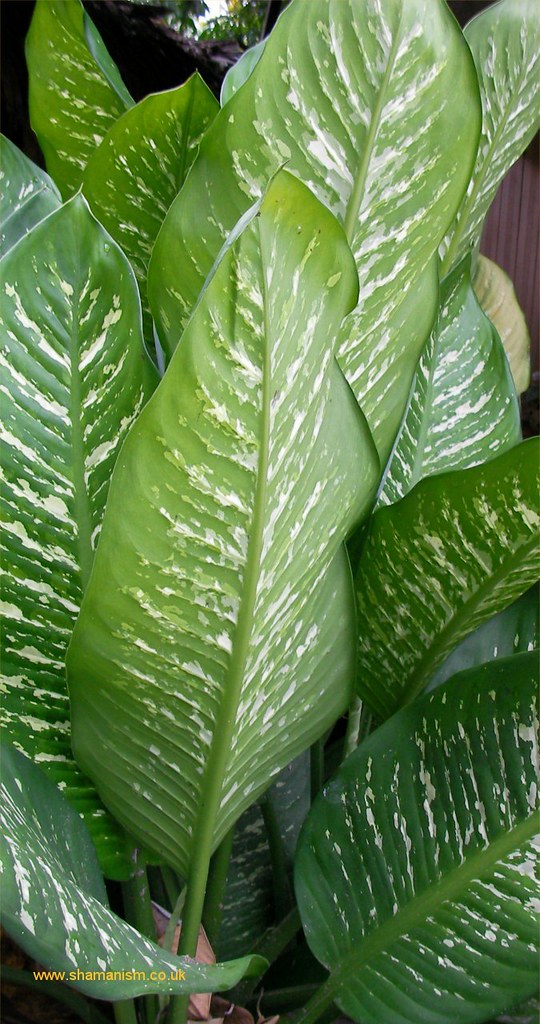
Patiquina (Xanthosoma poeppigii) is an Amazonian plant with notable medicinal uses, although it's less studied than others. Its most outstanding property in folk medicine is as an antivenom: the juice from its stems is traditionally applied to counteract the effects of bites from venomous snakes like the jergón. Additionally, it is used topically for its anti-inflammatory effects, providing relief for muscle aches, rheumatism, and swelling.
For external use, Patiquina leaves are used to create poultices that alleviate headaches (cephalalgia) and treat various skin conditions, including itching and specific jungle parasitic problems like the siso (jigger/sand flea infection). It is also used to treat digestive issues. Although these properties are ancestral, modern science has identified oxalic acid in its composition, validating some of its folk uses.
As a Master Plant, Patiquina is a symbol of protection and divination. Native peoples plant it near their homes to guard the family from harm and bad energies. Furthermore, it is credited with the ability to induce dreams and visions that allow the healer or the patient to uncover hidden events or predict the future, serving as a spiritual guide in the diagnosis of ailments caused by sorcery.
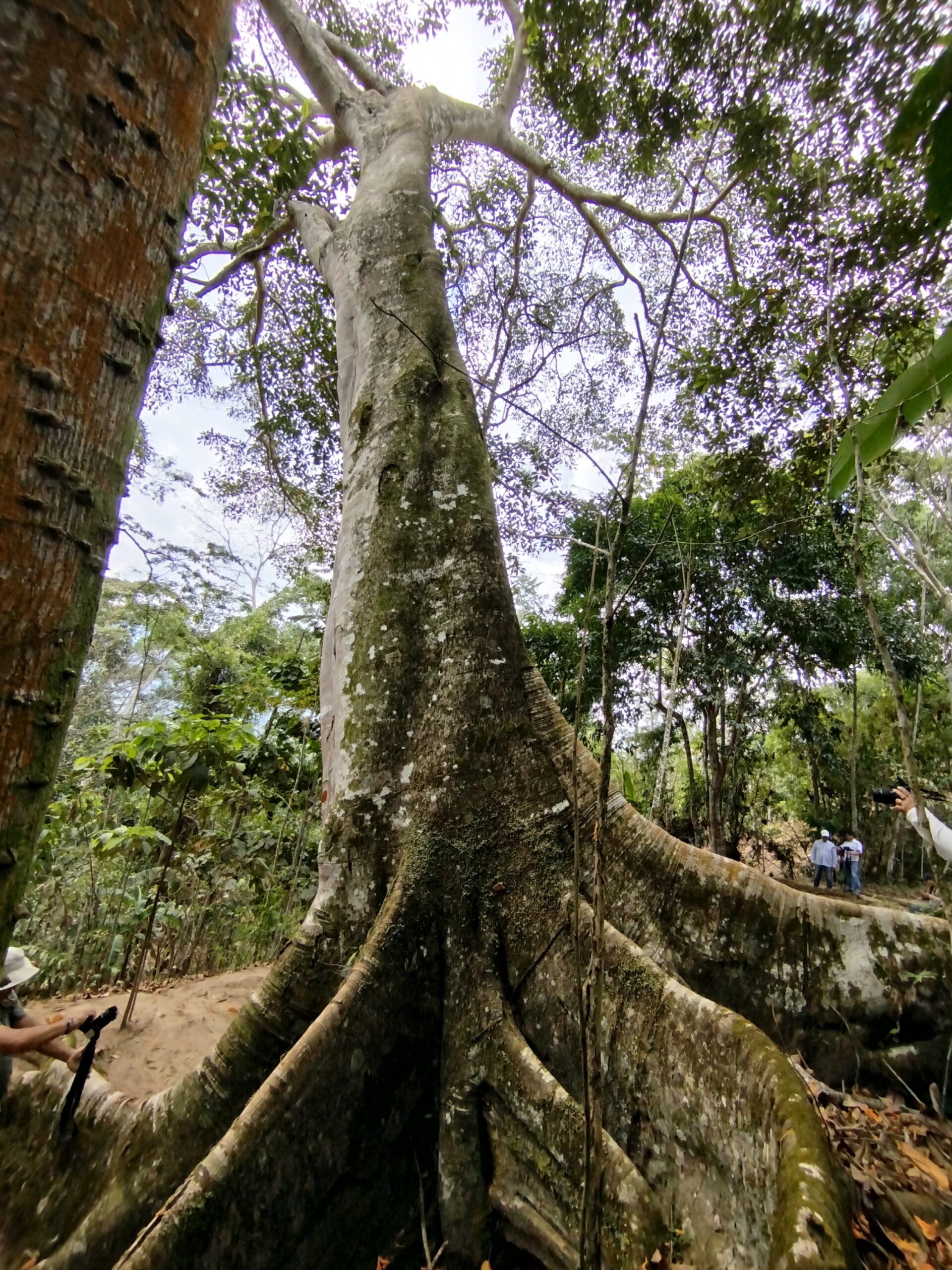
Ojé (Ficus insipida) is an Amazonian tree known for its potent whitish latex, which is the part most commonly used medicinally. Its main property, confirmed scientifically, is its antihelminthic or anti-parasitic action, effectively fighting various intestinal parasites. This is due to the proteolytic enzyme Ficin that it contains. Taken internally, the latex is also used as a strong purgative and an effective blood purifier.
Topically, the latex has a very wide traditional use. It is applied directly to relieve rheumatism pain and as a strong local analgesic against toothaches. Furthermore, in the jungle, it functions as an emergency remedy to neutralize and heal the area affected by snake bites or insect stings. The leaves, for their part, are used in a decoction to combat fever and anemia.
Considered a Master Plant in the Amazonian worldview, Ojé symbolizes the radical purification of the body, helping to eliminate diseases and toxins that affect physical health. Although it is not psychoactive, its fruits are associated with stimulating memory and mental lucidity. It is a spiritual protector and a pillar of the ecosystem, valued for the strength and sustenance it gives to the jungle.
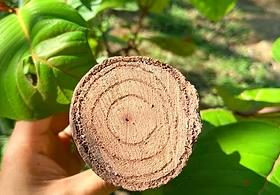
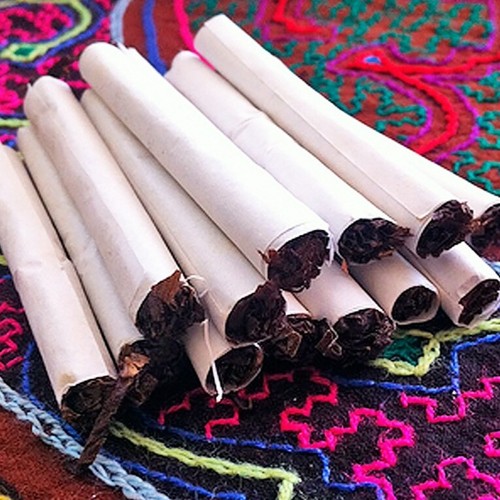
Mapacho (Nicotiana rustica) is a wild tobacco with a much higher nicotine concentration than commercial tobacco, and it is considered the "King Medicine" in the Amazon. Unlike recreational use, in shamanism it is utilized for deep physical and energetic cleansing. Its most extreme medicinal use is the tobacco purge, a decoction that causes intense vomiting to eliminate toxins, parasites, and negative energies from the body.
On a physical level, mapacho leaves have traditionally been used as an antiseptic to treat minor wounds and as a remedy to alleviate toothaches. However, its primary power is spiritual and energetic. The shaman employs it in the "soplada" (blowing) ritual, directing the pure smoke toward the patient to cleanse the aura and protect them against malevolent influences or sorcery.
As a fundamental Master Plant, mapacho is the foundation of shamanic diagnosis and healing. It provides strength, mental clarity, and structure to a person's spirit, being essential for centering and guiding participants in more intense ceremonies (such as those involving Ayahuasca). It is a rigorous master that teaches about healing and helps to dispel confusion, acting as a powerful protector and catalyst of consciousness.
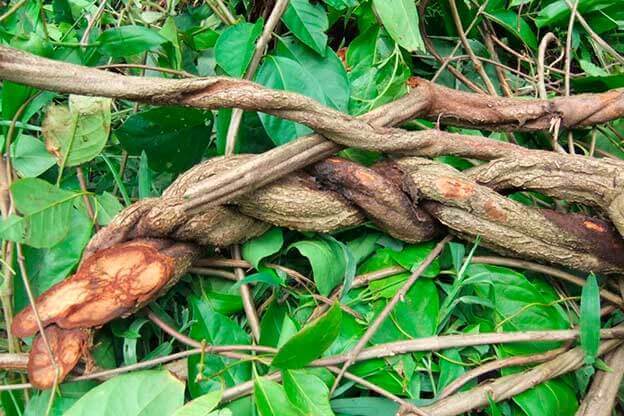
The plant known as Ayahuasca is a vine native to the Amazon basin, with the scientific name Banisteriopsis caapi. This Quechua name is used both to refer to the vine itself ("vine of the soul" or "rope of the dead") and to the ceremonial psychoactive brew prepared with it. Although the ayahuasca brew typically consists of this vine and the leaves of another plant (such as Psychotria viridis), the primary component and the one that gives it its name is B. caapi.
In the Amazonian context, B. caapi is considered a fundamental "Master Plant." Traditionally, it is valued for its deep spiritual and therapeutic properties: it acts as a vehicle that allows shamans and participants to gain knowledge, guidance, and engage in intense introspection. Furthermore, on a physical level, it is recognized for its purgative and cathartic effects, which are interpreted as an essential cleansing for the healing of the body and spirit.
Scientifically, the importance of B. caapi lies in its -carboline alkaloids, such as harmine, which are Monoamine Oxidase Inhibitors (MAOIs). This chemical function is crucial in the brew, as it allows DMT (the visionary compound in the other plant) to be active orally, which wouldn't happen if it were taken alone. Beyond its role as an MAOI, traditional medicine and even modern research recognize that the vine's alkaloids themselves possess psychoactive, rebalancing, and potentially neurogenic effects, reinforcing its status as a plant of profound medicinal value.
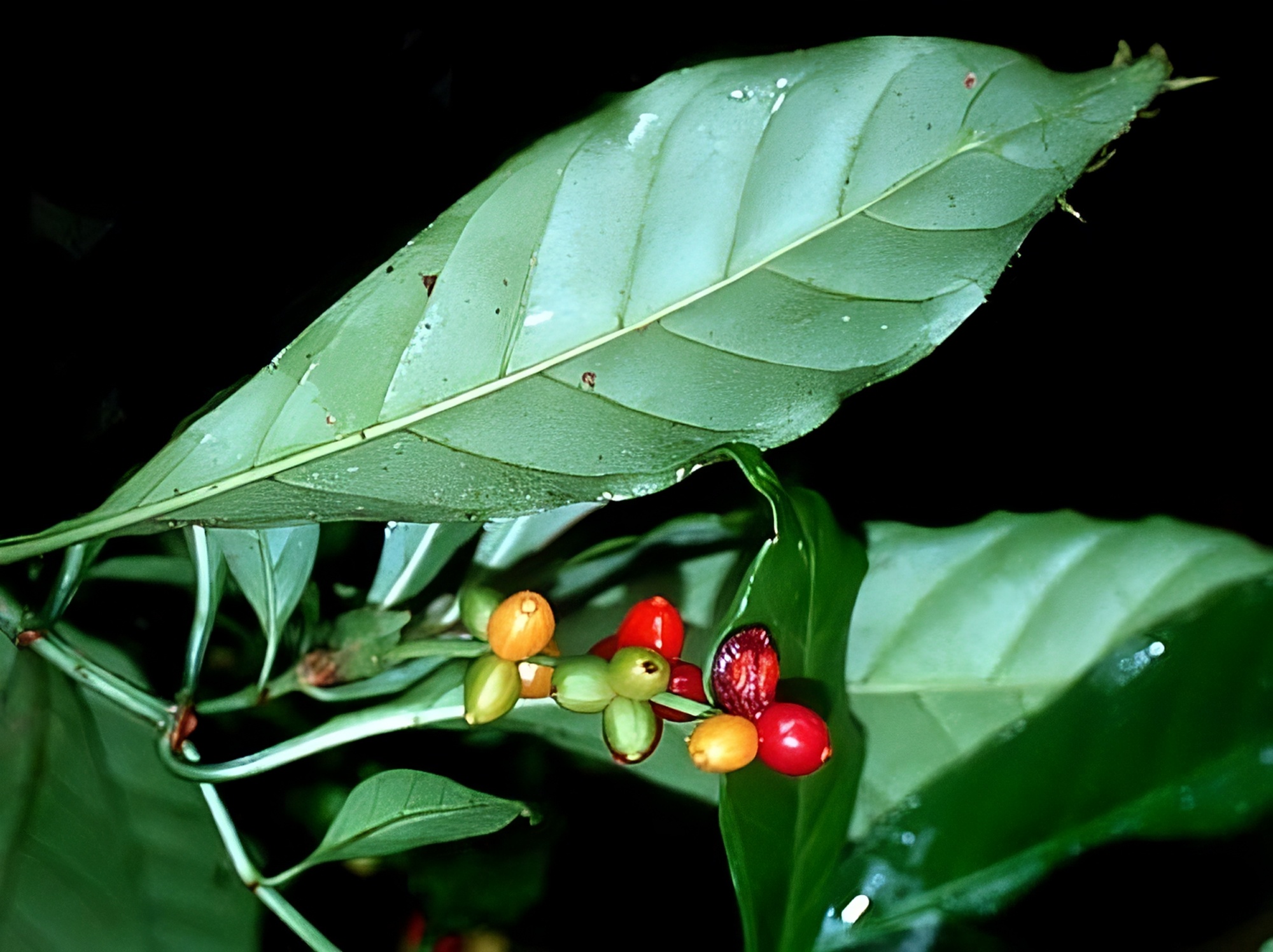
Chacruna (Psychotria viridis) is an Amazonian shrub essential in the preparation of the ayahuasca brew. Its primary role is to provide the visionary component of the drink: Dimethyltryptamine (DMT). DMT is a potent entheogenic alkaloid that is responsible for the intense visions, mystical experiences, and altered states of consciousness. However, for this compound to be active orally, it is absolutely necessary to combine Chacruna with the ayahuasca vine (Banisteriopsis caapi), which contains the MAO inhibitors (MAOIs) that activate it in the body.
As a Master Plant, Chacruna is revered in Amazonian cultures for being the carrier of vision and knowledge. It is traditionally understood that its "spirit" facilitates deep introspection, ego dissolution, and connection with the spiritual world. By generating these revealing experiences, the plant allows participants and shamans to diagnose and address the root of emotional and psychological problems, being key in the healing of addictions and depression.
In summary, Psychotria viridis is the catalyst component of the ayahuasca experience. Its leaves are the source of the entheogenic experience, offering mental clarity, deep emotional processing, and ritual purification, which manifests with physical reactions such as nausea and vomiting. Without Chacruna, ayahuasca would not generate the inner journey; the synergy with Banisteriopsis caapi is what transforms it into a powerful medicine.
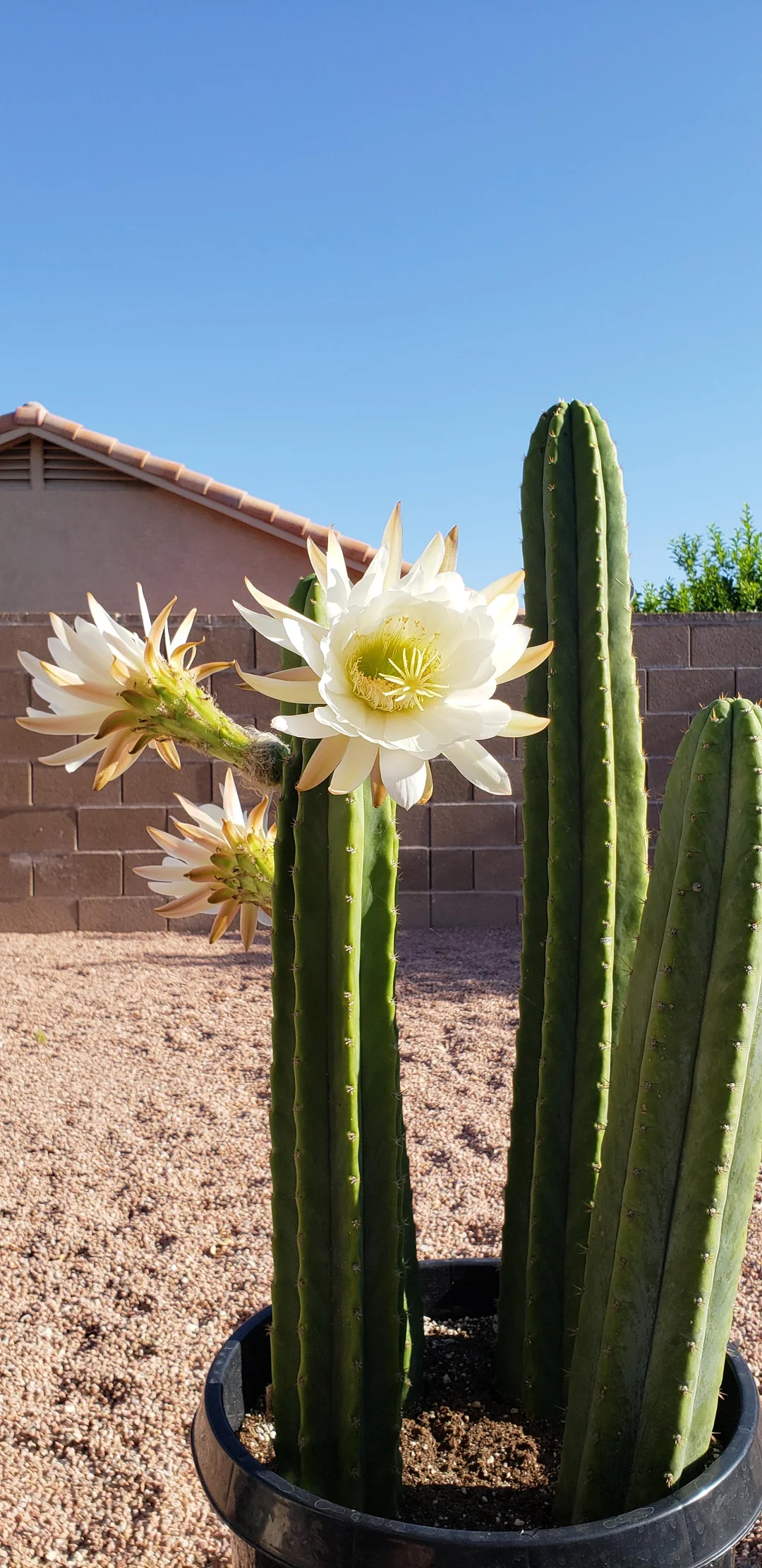
The San Pedro cactus (Echinopsis pachanoi), known in the Andes as Wachuma, is one of the most ancient Master Plants in South America, with a documented history of use spanning thousands of years. Its main medicinal property lies in the alkaloid Mescaline, which induces profound altered states of consciousness, visions, and introspection. In traditional Andean medicine, it is used for the healing of the body and spirit, treating nervous conditions, healing emotional trauma, and combating "bad luck" or sorcery.
As a Master Plant, San Pedro is venerated for its masculine energy, compared to that of a "father" or "grandfather," which provides clarity and direction in life. In Andean healing ceremonies, known as "mesas" (tables), the cactus acts as a visionary catalyst that allows the healer and the patient to diagnose the root of problems and gain insights or revelations. It is considered the plant that opens the doors to consciousness for deep self-knowledge.
In essence, San Pedro is a powerful agent of purification and spiritual guidance. Through the entheogenic experience, it allows for the emotional processing necessary for change and healing. Its importance is such that the traditional knowledge and uses of San Pedro have been declared Cultural Heritage of the Nation in Peru, highlighting its unavoidable role in the ancestral lineage of Andean healing practices.